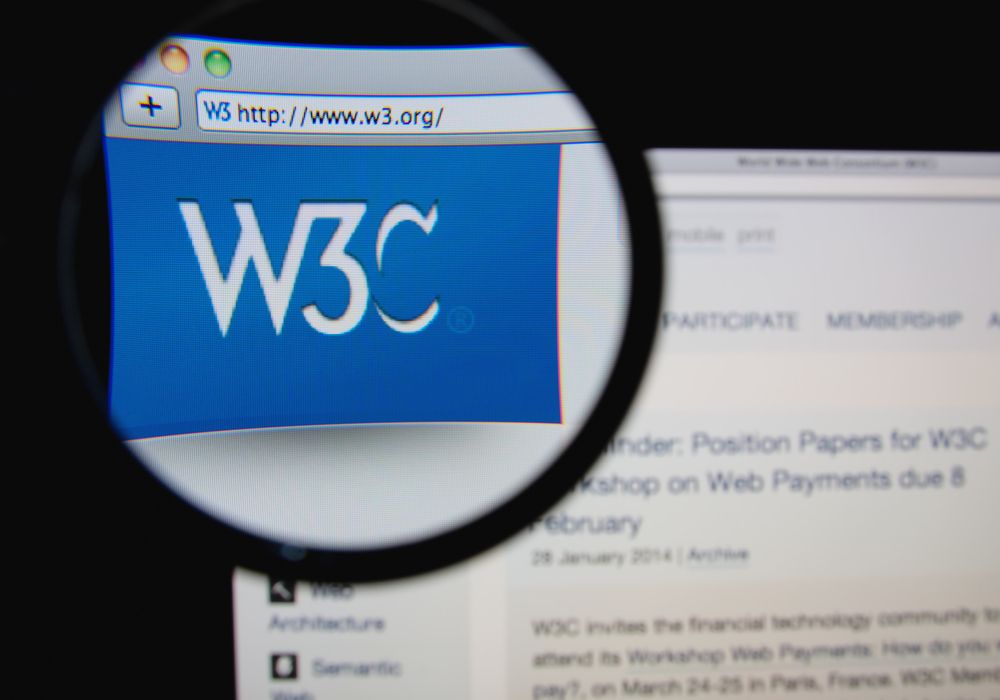
You have likely spent countless hours on your website. You chose a great theme and wrote helpful content. But have you thought about the code that holds it all together?
It can feel like a topic only web developers should worry about. So, let me answer the question about what is w3c validation in SEO and why you should care. Getting a handle on this topic can give you an edge because many others ignore it. Hire an SEO digital marketing agency to take care of the W3C validation if you’d like to get to the bottom of it.
Learning the basics of what is w3c validation in SEO helps you build a much stronger website from the ground up. It is a fundamental part of a solid digital marketing plan. Clean code is not just for appearances; it has real-world effects.
What Exactly is W3C Validation?
Let’s break this down into simple parts. The “W3C” stands for the World Wide Web Consortium. This organization, originally founded by the inventor of the web, Tim Berners-Lee, is the primary international web standards body.
This web consortium creates the standards and coding specifications for languages like HTML and CSS. These are the building blocks of every website you visit on the wide web. These web standards ensure that the internet remains an open and accessible platform for everyone.
Validation is the process of checking your website’s code against that official rulebook. It is like having an inspector look over your website’s blueprints. This process of code validation helps find errors, typos, and other mistakes in the HTML code that could cause problems for users and search engines.
A perfectly validated website has clean, well-structured, and validated code. This means it’s built exactly the way the founders of the web intended. You can read the W3C’s official mission to see how they guide the web’s development.
The Connection: What Is W3C Validation in SEO?
This is the central question for many site owners. Does Google look at your validation report and rank you higher for having fewer validation errors? The simple answer is no, not directly.
Google doesn’t use W3C validation as a direct ranking factor. Having a few stray html errors in your code won’t cause your site to vanish from search results. However, this is where most people stop investigating, which is a significant mistake in their SEO strategy.
The relationship between W3C validation and SEO is indirect but powerful. Clean, valid code impacts things that Google certainly cares about. Fixing a validation error is less about pleasing a machine and more about preventing side effects that hurt your SEO technical SEO performance.
Why Messy Code Can Hurt Your SEO (Even Indirectly)
Clean code is the foundation of a healthy website. When that foundation is shaky because of invalid code, it can create cracks in other areas of your technical SEO. It negatively impacts how users and search engines experience your site.
Browser Compatibility and User Experience
Have you ever visited a website on your phone that looked completely broken? Maybe buttons were overlapping or text was jumbled. This is often a symptom of messy code and rendering errors.
Different web browsers, such as Chrome, Firefox, and Safari, can interpret bad code in different ways. Your site might look perfect on your computer but be a complete mess for a potential customer using a different device. Poor browser compatibility across multiple browsers leads to a frustrating experience.
This lack of cross-platform compatibility creates a terrible and improved user experience. When a visitor gets annoyed and leaves your site immediately, that sends a negative signal to Google. High bounce rates can tell Google your page is not helpful, indirectly affecting your SEO ranking.
Site Speed and Performance
Website speed is a huge factor in modern SEO. No one wants to wait for a slow page to load, which can be caused by long rendering times. You should avoid code bloat whenever possible, as bloated and poorly written code forces a browser to work harder and take longer to display your page.
Every unnecessary line of code or structural error adds to your site’s weight. This can slow down your loading times, especially for users on slower mobile connections. Poor loading times directly harm your web vitals scores.
Google’s focus on Core Web Vitals makes it clear that performance is critical. A site with code that is valid is almost always lighter and faster. This focus on Core Web Vitals scores shows the importance of an efficient site, which is easier to achieve with clean code.
Crawlability and Indexability
Before Google can rank your website, it must understand what’s on it. It sends out programs called crawlers or “spiders” to read your website’s html code. These crawlers follow links and add your pages to Google’s massive library, the index.
Extremely messy or invalid html can confuse these crawlers. A severe error, like an unclosed tag, could prevent a crawler from reading the rest of your page. If Google can’t read your content, it can’t rank it for anything.
This also ties into device accessibility, which is about making your site usable for people with disabilities who use screen readers. Clean code is easier for these tools to interpret, offering an improved user experience. Google is paying more attention to multiple device accessibility, making it a key part of responsible web design.
How to Check Your Website’s W3C Validation
The good news is that you don’t need to be one of the web developers to check your site. The W3C offers validator tools that are free and simple for anyone to use. These validation tools will scan your site’s code and give you a report.
You can find the official W3C Markup Validation Service on their website. It is easy to use and provides results in seconds. You can also find a CSS validator for checking your style sheets.
Here’s a beginner’s guide on how to do it:
- Navigate to the validator website.
- Find the box that says “Address.”
- Type or paste your website’s full URL into the box.
- Click the “Check” button.
After a few moments, the tool will show you a list of errors and warnings it found. My advice is this: do not panic. Seeing a long list of validation errors is normal, even for huge websites like Instagram, LinkedIn, or major news SEO outlets.
Common Validation Errors and What They Mean
The validator report might look technical at first glance. However, many of the issues are quite common and can be grouped into a few categories. The goal is not a perfect score but to understand which errors actually cause problems.
Here are a few common validation errors you might see:
| Error Type | What It Means for You | Is It a Big Deal? |
|---|---|---|
| Stray End Tag | This is like an extra closing bracket. The code has a closing tag, such as a </div>, that doesn’t have a matching opening tag. | Usually minor. Major web browsers are good at ignoring these, but cleaning them up is good practice for coding standards. |
| Duplicate ID | An “ID” should be a unique name for one specific element on a page. This error means you have used the same ID on two or more elements. | This can be significant. It can break website functions that rely on JavaScript, so you want to fix it. |
| Missing alt Attribute | Every image tag should have an alt attribute. This is the text describing the image if it fails to load or for screen readers. | This is very important to fix. It hurts your accessibility and your chances of ranking in image search. |
| Element Not Allowed | This means a certain HTML tag is in a place where it does not belong. An example is putting a paragraph tag inside a heading tag. | This can cause unexpected layout problems. It’s worth investigating as it might be the source of a visual bug. |
This is not a complete list. It just shows that many errors have simple explanations. Fixing them often means correcting a small typo or restructuring a piece of your page’s HTML so the code adhere to the standards.
A Balanced Approach: Progress, Not Perfection
I want to be very clear about how validation works. The goal of using a validator is not to achieve a perfect, error-free report. On a modern website using tracking scripts, third-party plugins, and dynamic features, getting zero errors is nearly impossible, especially with WordPress SEO.
You should think of W3C validation as a diagnostic tool, not a final exam. It is a guide that helps you find potential problems that could be impacting your site’s performance and user experience. It’s wise to pay attention to the report, but perfection isn’t the objective.
Focus on fixing the critical errors first. If you notice a page looks broken on a specific mobile device, the validator is a great place to start. It might point you directly to the code that needs attention, helping you validate correctly over time.
Impact Across Different SEO Disciplines
Clean code helps different areas of search engine optimization. From small local businesses to large corporations, the benefits are clear. Understanding how it fits into your overall digital marketing efforts is important.
Mobile SEO and Local SEO
For both mobile SEO and local SEO, user experience on the go is paramount. A customer looking for a local business on their phone will not tolerate a slow or broken website. Because invalid code can lead to poor rendering on a mobile device, it can directly cause a potential customer to leave and choose a competitor.
Enterprise SEO
In enterprise SEO, managing thousands or even millions of pages makes consistency crucial. A small, repeated validation error across a large site can add up to significant performance issues and crawl budget waste. Establishing strong coding standards and regular validation checks can prevent these widespread problems.
WordPress SEO
If you use a content management system like WordPress, you may feel detached from the code. However, themes and plugins are common sources of validation errors. When choosing new tools for your site, considering their code quality is a smart move for your SEO WordPress health.
Conclusion
Let’s circle back to our original question. Thinking about what is w3c validation in SEO is not about checking off another box on a technical SEO checklist. It is about understanding that a well-built website is the best foundation for any SEO strategy.
While validation itself is not a direct ranking signal, it promotes the things Google loves. These include a great user experience, fast load speeds, and better multiple device accessibility for everyone. Knowing what is w3c validation in SEO gives you a tool to diagnose and fix the technical issues holding your website back.
Ultimately, clean code helps search engines understand your content and helps users have a better experience. These are two of the most important goals in all of search engine optimization. Taking the time to validate your code is a step toward building a more robust and successful online presence.












